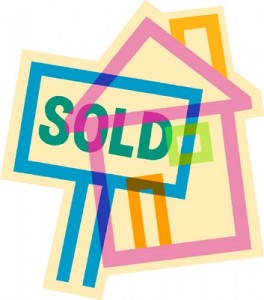Pent-up demand is a term that has been thrown around quite a bit in housing debates lately, and last week, the NAHB threw its analytical hat in the ring.
Often, the demand argument is presented as the second coming for housing. When tentative buyers finally enter the market, we are told, the housing market will truly recover, and to visualize the resulting market of such a scenario, the NAHB used data from the American Housing Survey (AHS) to project how housing would be affected.
In a blog post on its market-based experimentation, the NAHB stated that a considerable number of households were postponed in the economic recession.
“NAHB has estimated that, as a result of current economic conditions, there are approximately 2.1 million households that were expected to form in the last few years but did not,” the post read. “These ‘potential’ households typically represent people doubling and tripling up on roommates and young adults living with parents.”
Though an improving job market is often pegged as the jumpstart for those household formations, the NAHB was quick to clarify that other market forces, such as restrictive mortgage credit and contract failures, could still limit formations, and the AHS data is meant to accurately reflect such a situation.
That data, according to the NAHB, presents a conflict between renting and buying. From 2005 to 2009, the AHS data clearly shows a decline in new households from 2,173 to 1,876 for homeowners who moved to a new unit to “establish a new household.” In addition, the share of those homes that became owner-occupied fell from 38 percent in 2005 to 32 percent in 2009.
The end result has been a rise in renting and a substantial fall in apartment vacancies. Because so many new households are rental units, the NAHB predicts that roughly 70 percent of pent-up demand will go towards multifamily rental units.
“The analysis here suggests that unlocking pent-up demand could, in the short-run, cause the homeownership rate to fall, as many of the new households added will be renters,” the blog stated. “While this effect should be temporary, it does add another dimension to the ongoing debate among economists and housing analysts regarding what the low point will be for the homeownership rate as the housing market recovery gains momentum.”
Of course, that process could implicitly promote homeownership. With so many residents joining the renting fray, rental prices will rise, making homeownership increasingly more attractive. And it’s worthwhile revisiting just how many homeowners we’ll be looking at when the time finally comes.
As we reported last month, the number of households steadily grew from 1947 to 2007 along with the U.S. population, but in 2008, 2010 and 2011, the recession halted that process, so though population continued to grow, households did not. The reason for the decline was Echo Boomers delaying their introduction to the housing market, opting instead to live with their parents and enter the workforce through that avenue.
But as the New Yorker‘s James Surowiecki pointed out, once those Echos enter the market, the demand will be formidable, and spending on other durable goods, such as washing machines and other appliances, will rise with the formation of new households.
So, roll out the red carpet for the Echos?
